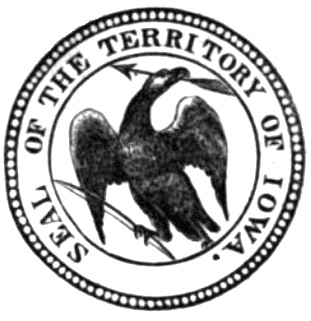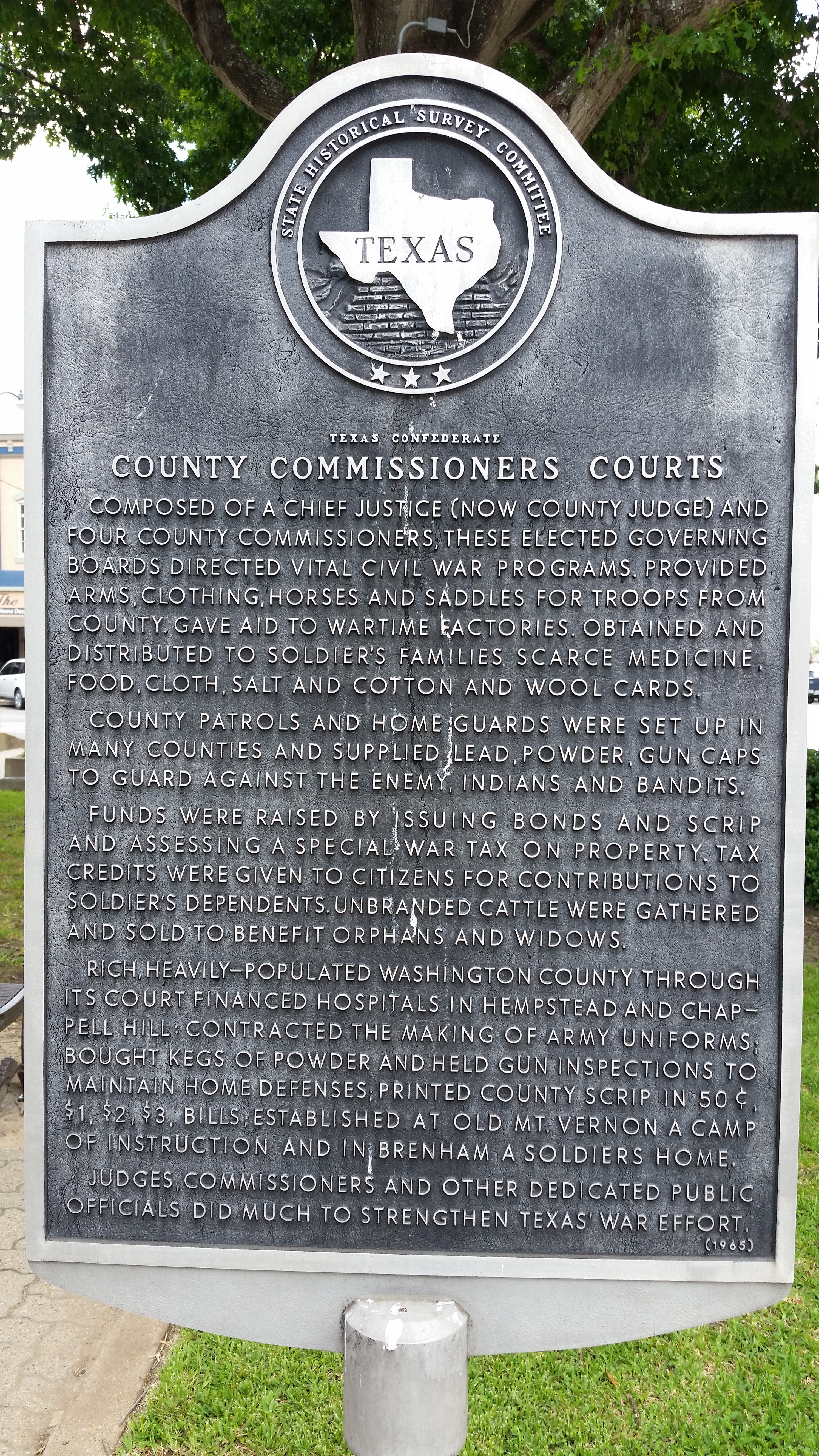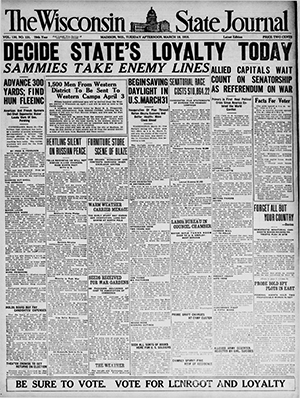|
James P. Cox
James Pitman or Pittman Cox (January 9, 1804 – March 28, 1866) was a tanner, farmer, sheriff and judge from Grant County, Wisconsin. Background Cox was born in Philadelphia, Pennsylvania in 1802. He was orphaned at the age of eight, and was raised by a Quaker family. He received a rudimentary education, then was apprenticed to a tanner. Dissatisfied with tanning, in 1824 he migrated to Wisconsin Territory, settling in an area then part of Iowa County, but which would later become Grant County, and in 1832 was a second lieutenant in the Black Hawk War. He married Caroline Dawson, a native of Shawneetown, Illinois, with whom he would eventually have nine children; they finally settled on a farm in a settlement near Potosi in Grant County, where in April 1839 he filed a plat with an extensive plan for a city to be called Osceola, which never materialized. A ferry landing was established at Osceola, and Cox and his partner Justus Parsons were granted authority to run a ferry to c ... [...More Info...] [...Related Items...] OR: [Wikipedia] [Google] [Baidu] |
Tanner (occupation)
Tanning may refer to: *Tanning (leather), treating animal skins to produce leather *Sun tanning, using the sun to darken pale skin **Indoor tanning, the use of artificial light in place of the sun **Sunless tanning, application of a stain or dye to the skin (active ingredient in tanning lotion products is dihydroxyacetone (DHA)). * Physical punishment, metaphorically, such as a severe spanking which leaves clear marks See also *Skin whitening *Tan (color) *Tan (other) Tan or TAN may refer to: Businesses and organisations * Black and Tans, a nickname for British special constables during the Irish War of Independence. By extension "Tans" can now also colloquially refer to English or British people in general, ... * Tannin (other) {{disambiguation ... [...More Info...] [...Related Items...] OR: [Wikipedia] [Google] [Baidu] |
Iowa Territory
The Territory of Iowa was an organized incorporated territory of the United States that existed from July 4, 1838, until December 28, 1846, when the southeastern portion of the territory was admitted to the Union as the state of Iowa. The remainder of the territory would have no organized territorial government until the Minnesota Territory was organized on March 3, 1849. History Most of the area in the territory was originally part of the Louisiana Purchase and was a part of the Missouri Territory. When Missouri became a state in 1821, this area (along with the Dakotas) effectively became unorganized territory. The area was closed to white settlers until the 1830s, after the Black Hawk War ended. It was attached to the Michigan Territory on June 28, 1834. At an extra session of the Sixth Legislative Assembly of Michigan held in September, 1834, the Iowa District was divided into two counties by running a line due west from the lower end of Rock Island in the Mississippi Rive ... [...More Info...] [...Related Items...] OR: [Wikipedia] [Google] [Baidu] |
Waterloo, Wisconsin
Waterloo is a city in Jefferson County in the U.S. state of Wisconsin. As of the census of 2020, the population was 3,483. The name Waterloo was suggested by Mr. Wilt, a Frenchman living here, who was one of Napoleon's soldiers, at the battle of Waterloo. Geography Waterloo is located at , (43.18366, -88.989965) at the intersection of Wisconsin Highway 89 and Wisconsin Highway 19 in northwestern Jefferson County. According to the United States Census Bureau, the city has a total area of , of which, is land and is water. Demographics As of 2000, the median income for a household in the city was $50,221, and the median income for a family was $56,446. The per capita income for the city was $23,011. About 5.0% of families and 4.8% of the population were below the poverty line, including 5.8% of those under age 18 and 7.1% of those age 65 or over. 2010 census As of the census of 2010, there were 3,333 people, 1,331 households, and 867 families residing in the city. The popula ... [...More Info...] [...Related Items...] OR: [Wikipedia] [Google] [Baidu] |
Pleasant Valley, Grant County, Wisconsin
British Hollow is an Unincorporated area, unincorporated community originally located in the northeastern corner of the political subdivisions of Wisconsin#Towns, Town of Potosi (town), Wisconsin, Potosi, Grant County, Wisconsin, United States. History The first white residents were Terence Coyle and his family, who built a cabin there and were in permanent occupancy by the spring of 1832. In 1836, when Grant County was organized, it was made a separate minor civil division, precinct from the rest of Potosi, and named Pleasant Valley, a name which it still held at the time of the passage of the original (1848) Constitution of Wisconsin. It is unclear where the name "British Hollow" came from; it may have been to distinguish this settlement from the nearby Dutch Hollow, Wisconsin, Dutch Hollow, whose inhabitants were primarily German people, Germans in origin. At one time British Hollow (sometimes shortened to British) (which by 1848 also included most of Harrison, Grant County, Wi ... [...More Info...] [...Related Items...] OR: [Wikipedia] [Google] [Baidu] |
New Lisbon, Wisconsin
New Lisbon is a city in Juneau County, Wisconsin, United States. The population was 1,748 at the 2020 census. History The site of New Lisbon was used as a seasonal winter encampment by Ho-Chunk people, who called it (anglicized to ''Wa Du Shuda''), meaning "we leave canoe here." The United States acquired the land from the Ho-Chunk nation in an 1836 treaty. The first white settlers, Amasa Wilson and C.B. Smith, arrived in 1838 to harvest lumber in the vicinity. Wilson and Smith selected the site of New Lisbon for a log boom on the Lemonweir River and constructed a sawmill at the site in 1842-1843. In 1855, Amasa Wilson platted the village. J.A. Chase platted an addition not long afterwards. The village was originally named ''Mill Haven'' but later changed to ''New Lisbon'', possibly at the suggestion of county clerk Larmon Saxton, who hailed from Lisbon, Ohio. In 1857, the La Crosse and Milwaukee Railroad connected to the community. New Lisbon was incorporated by the Wiscons ... [...More Info...] [...Related Items...] OR: [Wikipedia] [Google] [Baidu] |
Hurricane, Wisconsin
Beetown is a town in Grant County, Wisconsin, United States. The population was 734 at the 2000 census. The unincorporated communities of Beetown, Diamond Grove, Five Points, Flora Fountain, Hurricane, and North Andover are located in the town. The former community of Pleasant Ridge was also located in the town. History Local settler Cyrus Alexander discovered a block of lead under a bee tree, naming it bee lead, which eventually spawned the name of the town. Geography According to the United States Census Bureau, the town has a total area of 48.4 square miles (125.4 km), all of it land. Demographics At the 2000 census there were 734 people, 261 households, and 209 families in the town. The population density was 15.2 people per square mile (5.9/km). There were 273 housing units at an average density of 5.6 per square mile (2.2/km). The racial makeup of the town was 99.86% White, and 0.14% from two or more races. Hispanic or Latino of any race were 0.14%. Of the ... [...More Info...] [...Related Items...] OR: [Wikipedia] [Google] [Baidu] |
Wisconsin State Assembly
The Wisconsin State Assembly is the lower house of the Wisconsin Legislature. Together with the smaller Wisconsin Senate, the two constitute the legislative branch of the U.S. state of Wisconsin. Representatives are elected for two-year terms, elected during the fall elections. If a vacancy occurs in an Assembly seat between elections, it may be filled only by a special election. The Wisconsin Constitution limits the size of the State Assembly to between 54 and 100 members inclusive. Since 1973, the state has been divided into 99 Assembly districts apportioned amongst the state based on population as determined by the decennial census, for a total of 99 representatives. From 1848 to 1853 there were 66 assembly districts; from 1854 to 1856, 82 districts; from 1857 to 1861, 97 districts; and from 1862 to 1972, 100 districts. The size of the Wisconsin State Senate is tied to the size of the Assembly; it must be between one-fourth and one-third the size of the Assembly. Presently, t ... [...More Info...] [...Related Items...] OR: [Wikipedia] [Google] [Baidu] |
County Commission
A county commission (or a board of county commissioners) is a group of elected officials (county commissioners) collectively charged with administering the county government in some states of the United States; such commissions usually comprise three to five members. In some counties within Georgia, however, a sole commissioner holds the authority of the commission. In parts of the United States, alternative terms such as County Board of Supervisors or County Council may be used in lieu of, but generally synonymous to, a County Commission. However, in some jurisdictions there may be distinct differences between a County Commission and other similarly titled bodies. For example, a County Council may differ from a County Commission by containing more members or by having a Council-Manager form of government. In Indiana, every county, except Marion, which is consolidated with Indianapolis, has both a County Commission and a County Council, with the County Commission having admi ... [...More Info...] [...Related Items...] OR: [Wikipedia] [Google] [Baidu] |
Wisconsin Express
The ''Wisconsin State Journal'' is a daily newspaper published in Madison, Wisconsin by Lee Enterprises. The newspaper, the second largest in Wisconsin, is primarily distributed in a 19 county region in south-central Wisconsin. As of September 2018, the ''Wisconsin State Journal'' had an average weekday circulation of 51,303 and an average Sunday circulation of 64,820. The ''State Journal'' is the state's official newspaper of record, and statutes and laws passed are regarded as official seven days after the publication of a state legal notice. The State Journal's editorial board earned the newsroom's first Pulitzer finalist honor in 2008 for its "persistent, high-spirited campaign against abuses in the governor's veto power." The state's constitution was amended after the innovative, multi-media editorial campaign and the governor's veto power was limited. The staff of the ''Wisconsin State Journal'' was also a finalist for the Pulitzer Prize for Breaking News Reporting in 20 ... [...More Info...] [...Related Items...] OR: [Wikipedia] [Google] [Baidu] |
Whig Party (United States)
The Whig Party was a political party in the United States during the middle of the 19th century. Alongside the slightly larger Democratic Party, it was one of the two major parties in the United States between the late 1830s and the early 1850s as part of the Second Party System. Four presidents were affiliated with the Whig Party for at least part of their terms. Other prominent members of the Whig Party include Henry Clay, Daniel Webster, Rufus Choate, William Seward, John J. Crittenden, and John Quincy Adams. The Whig base of support was centered among entrepreneurs, professionals, planters, social reformers, devout Protestants, and the emerging urban middle class. It had much less backing from poor farmers and unskilled workers. The party was critical of Manifest Destiny, territorial expansion into Texas and the Southwest, and the Mexican-American War. It disliked strong presidential power as exhibited by Jackson and Polk, and preferred Congressional dominance in lawma ... [...More Info...] [...Related Items...] OR: [Wikipedia] [Google] [Baidu] |
1st Wisconsin Territorial Assembly
The First Legislative Assembly of the Wisconsin Territory convened from , to , and from , to , in regular session. The Assembly also convened in special session from , to . The first session was held at Belmont, Iowa County (in present-day Lafayette County, Wisconsin). The 2nd session and special session were held at Burlington, Des Moines County (in present-day Des Moines County, Iowa). The three sessions of the 1st Legislative Assembly were the only legislative sessions to take place before the division of the Iowa Territory from the Wisconsin Territory. Major events * April 30, 1836: Henry Dodge was appointed the first Governor of the Wisconsin Territory. * October 10, 1836: George Wallace Jones elected delegate to the United States House of Representatives from Wisconsin Territory's at-large congressional district. * December 1836: Henry S. Baird appointed the first Attorney General for the Wisconsin Territory. * January 26, 1837: Michigan was admitted to the United Stat ... [...More Info...] [...Related Items...] OR: [Wikipedia] [Google] [Baidu] |
Iowa County, Wisconsin
Iowa County is a county (United States), county in the U.S. state of Wisconsin. As of the 2020 United States Census, 2020 census, the population was 23,709. Its county seat and largest city is Dodgeville, Wisconsin, Dodgeville. When created, it was part of the Michigan Territory. Iowa County is part of the Madison, Wisconsin, Madison, Wisconsin, Madison, Wisconsin metropolitan area, Metropolitan Statistical Area. History The county organized under the Michigan Territory government in 1830. It was named for the Iowa people, Iowa tribe. Geography According to the United States Census Bureau, U.S. Census Bureau, the county has an area of , of which is land and (0.7%) is water. It is drained by tributaries of the Pecatonica River, which has its headwaters in the county. The highest point in the county is West Blue Mound at 1,716 ft. above sea level. The lowest point is the Wisconsin river at the Grant County line at 667 ft. above sea level. Rivers and streams * Harker Creek ( ... [...More Info...] [...Related Items...] OR: [Wikipedia] [Google] [Baidu] |







